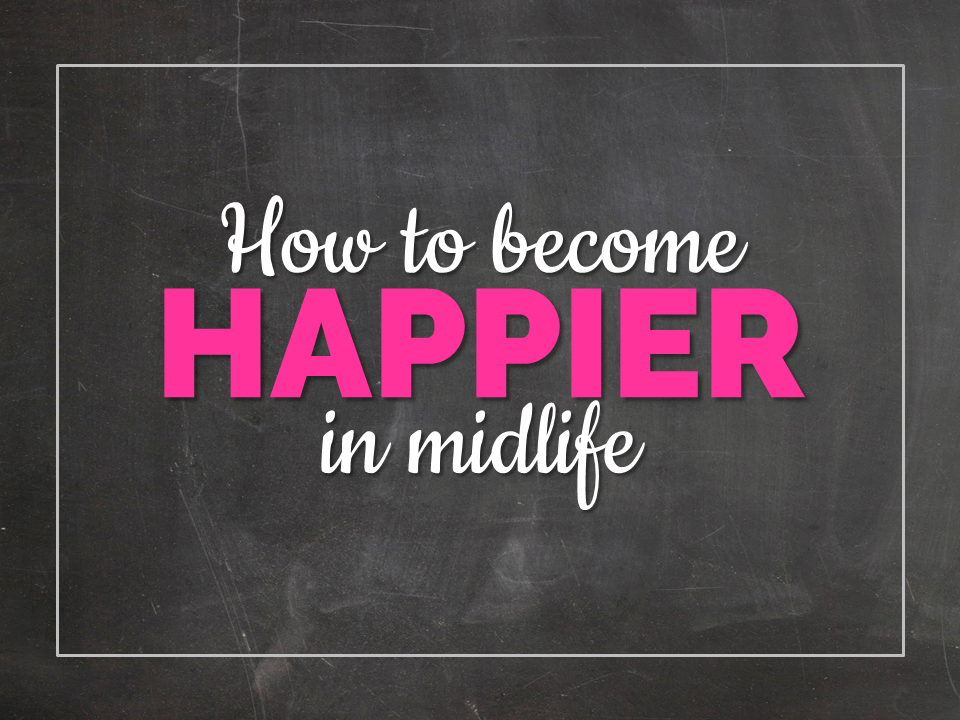I think of perimenopause as a time of awakening.
It kind of takes you by the shoulders and shakes you.
And if you’ve been in a busy-ness trance, like many of us, it may cause you to look around and wonder how you got here.
You start to re-examine everything in your life.
Like the time and effort you spend on your work.
And the quality of relationships you have with your partner or kids or parents or friends.
And of course, the shape and health of your body.
You may find yourself in a place, emotionally or physically, they don’t really want to be, but it’s what you’ve become used to.
It’s a dull kind of normal… It’s not terrible, but it’s not great.
You know you’re not as happy as you could be.
As you want to be.
“But what can you do? This is just life, right?”
Right?
I don’t think so.
And I don’t think we can blame it on hormones.
Changing hormones can impact our day-to-day mood but I’m talking about something deeper.
A state of being.
I think at some point, probably years ago, we let a feeling take over.
And that feeling became a mood, and that mood became a personality trait or state of being.
(I didn’t actually make that up, it’s from Joe Dispenza’s book, “Breaking the Habit of Being Yourself.”)
Basically, we just got into the habit of being less than happy.
We settled in and got comfortable there.
But we can break that habit.
And we can be happier and feel better.
Your happiness setting
That mood that became a personality trait is just a familiar state of mind for you.
It’s a state of mind that you return to after any emotional high or low.
And I call it your happiness setting.
It’s like the temperature setting on your thermostat.
In the case of a thermostat, you set the temperature to let’s say 21°C, and even if the temperature in the house drops because you left the door open on a winter day in Montreal, your home heating system will kick in and bring the temperature back to 21°C.
So, air from outside triggers the programming inside.
You are like your home.
If your baseline happiness is set at LOW, and something happens to make you feel VERY happy, your programming will find a way to bring you right back down to LOW.
And that programming is made up of your habitual thoughts, beliefs, and feelings.
For example, you might be in the habit of thinking, “I’m stuck in this relationship” or “I hate the way I look”.
And that thinking leads you to feel unhappy.
Even if you change relationships or change your body, your happiness setting will not have changed, and you’ll find your baseline happiness dropping right back down to low again.
So, how do you increase your happiness setting?
When I work with clients and they tell me they want to lose belly fat, drop twenty pounds, leave their job, have a better love life, bring in more money…
I ask them why.
And most often they say, “I just want to feel better… happier.”
Although I can give them things to do (diet, exercise,…), hold them accountable, and cheer them on, I can’t increase their baseline happiness.
Happiness is an inside job, so you can’t find it by changing outside things.
What I can do, as a coach, is help them explore their inner settings and teach them methods I know that can change those settings.
And it begins with becoming aware of those habitual, low-energy thoughts and feeings.
Once you become aware, and you identify what you want to change, you’re ready to turn the dial on your happiness setting.
There are many ways to do this.
One simple way is to move your body.
The more you move, the happier you tend to feel.
It’s scientifically proven that moving your body causes a release of the neurotransmitter, dopamine.
Dopamine, also known as the “pleasure hormone”, elevates your mood, and also has other benefits like increased attention and focus, better sleep, and more motivation.
So, therefore, the more often you move, the happier you will feel.
And if movement becomes a habit, your happiness thermostat will be turned up a notch.
If you want to learn more ways of turning up your happiness setting…
Join my 10 Days to Happier Challenge which starts April 1st.

You don’t attract what you want, you attract who you are.
I just read those words this week, written over a hundred years ago by James Allen in, “As a Man Thinketh.”
For years I wanted things to change, but it was only when I changed that I got more of what I wanted.
So, I only attracted more happiness when I decided to be happier.
I’ve read a lot of self help books.
And I still do.
Because it’s easy to forget this stuff.
When you’re bogged down by every day events, you can forget you have a choice in how you feel.
You can get sucked into the details of the story unfolding in front of you, and allow it to control your feelings.
But you also have the choice and ability (as you’re human) to zoom out and see a bigger picture.
With a bigger picture in view, you can see what’s true and important and what’s really not.
Your perspective shifts.
You can suddenly accommodate many points of view.
You become more tolerant, patient, and… happier.
And, as you can guess, when you change your level of happiness, you affect more than just yourself.
Your shift affects everyone in your home, at work, and any environment you’re in.
Can you imagine if everyone was just a little happier?
Avoiding unhappiness
One last note about happiness…
You can’t get there by avoiding unhappiness.
I think we try to avoid hard emotions in an effort to preserve how we feel, because we want to stay comfortable.
Even if it’s not happiness we’re experiencing, the familiar still somehow feels safer.
It feels risky to allow unhappiness in.
What if it never leaves?
But the very nature of emotion is constant change.
Emotions flow like water, and if we allow them to keep flowing, we feel vibrant and alive.
When we try to avoid an emotion, or hold onto an emotion, we feel blocked and stuck.
So happiness won’t come from avoiding unhappiness.
But, counter-intuitively, it will come if you embrace unhappiness as a part of the flow.

When I was in my early twenties, I was told that my happiness setting couldn’t be changed.
Basically, I read an article that stated we’re were born with this setting, and that’s that.
That really didn’t sit well with me.
It made me feel kind of awful.
I knew that my setting was pretty low, and I really wanted to change it.
So, like so many others, I went about changing my externals…
I did the things I thought would lead me to happiness.
I traveled, I found a long-term relationship, I made money…
For sure I had moments of happiness, but that setting didn’t budge.
So, I began to do the work I was dreading… Looking at the internals.
Me.
I quickly discovered that what I thought was true and solid about my character and beliefs, were not.
Everything in my mind, including my beliefs and character, are not set in stone.
Even my brain is changeable.
And so, through some simple practices, and a willingness to take an honest look at myself, I have dialed up my happiness setting.
It’s still a work in progress, but I know I’m miles ahead of where I was.
And best of all, I proved that article wrong.
If you want to learn more about how to do this, I’ll be sharing some of my favorite practices in my 10 Days to Happier Challenge.
It starts April 1st.
Hope you can join us!
Keep moving forward,
Debbie


